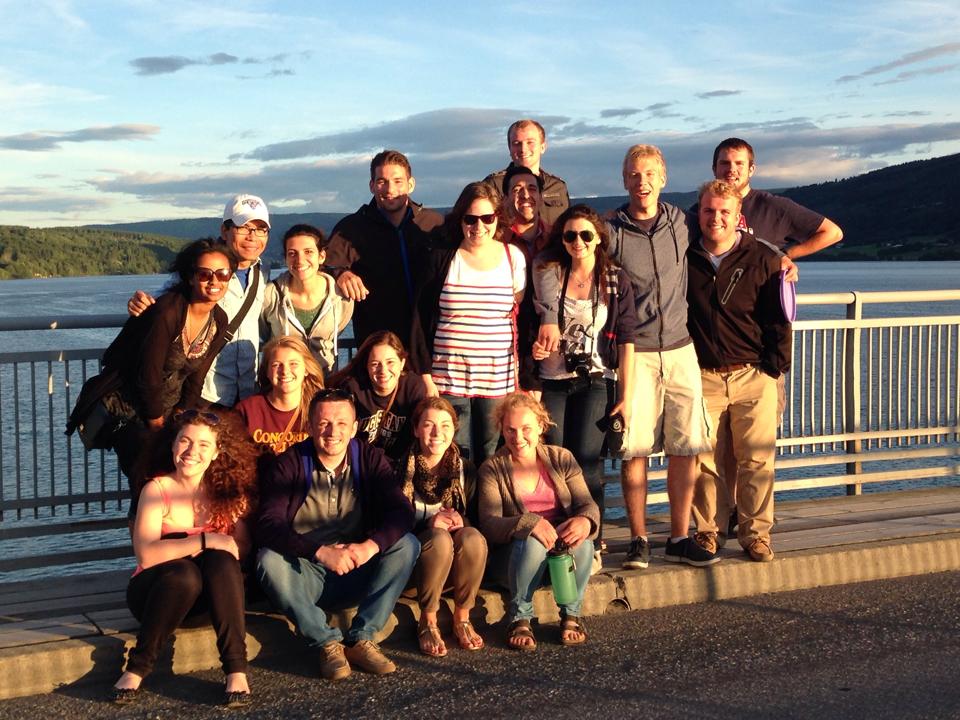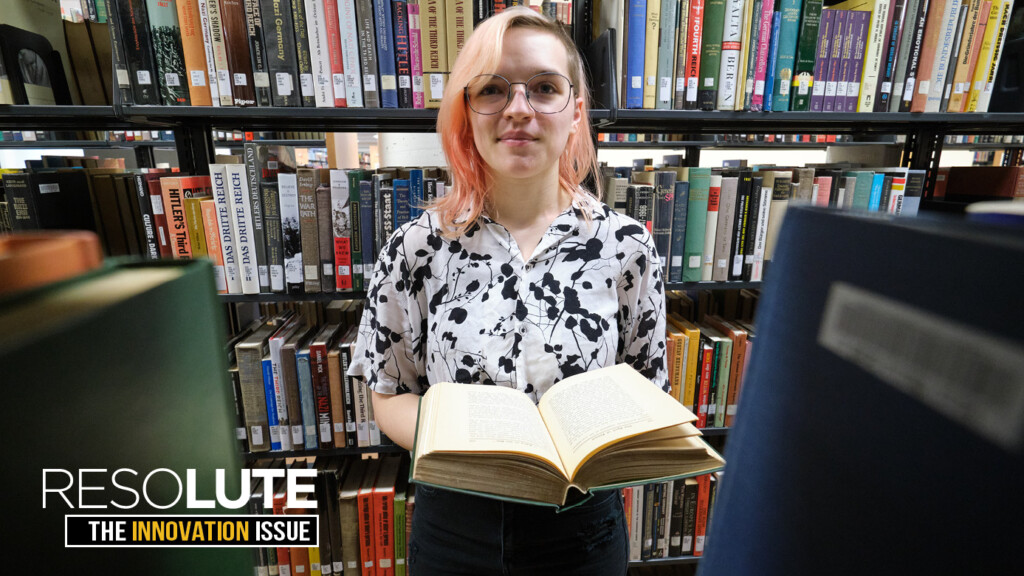Page 10 • (1,071 results in 0.052 seconds)
-

About two and a half hours east of Tacoma sits the farming community of Yakima, Washington. The Central Washington county has about 243,000 residents and is probably most notable for producing the majority of the nation’s apples and hops. But it’s also where Henry Temple…
A Tale of Two Students: Yakima area students find a home away from home Posted by: Silong Chhun / January 4, 2021 Image: Henry Temple ‘21 and Isabel Gutierrez ‘23 (Photo by Jake Parrish) January 4, 2021 By Veronica CrakerMarketing & CommunicationsAbout two and a half hours east of Tacoma sits the farming community of Yakima, Washington. The Central Washington county has about 243,000 residents and is probably most notable for producing the majority of the nation’s apples and hops. But it’s also
-

With seemingly unending conflict in the Middle East, and now horrible atrocities in the Ukraine with the downing of the Malaysian jet, it’s easy to throw up one’s hands and wonder if anything, really, anything is going to make a difference in this world. But…
Two Lutes Attend Peace Scholars Program at the Oslo International Summer School Posted by: Thomas Krise / July 25, 2014 July 25, 2014 With seemingly unending conflict in the Middle East, and now horrible atrocities in the Ukraine with the downing of the Malaysian jet, it’s easy to throw up one’s hands and wonder if anything, really, anything is going to make a difference in this world. But there are two Pacific Lutheran University students who are determined to do just that – make a difference
-
Originally published in 2003 The daily headlines reflect the relentless march to war and violence: probable war in Iraq, continuing strife in the Middle East and the “war” on terror. Like other members of faith communities across the globe, I find myself wondering how I,…
Wanted: Fellow Conspirators Posted by: alex.reed / May 20, 2022 May 20, 2022 By Pauline M. KaurinOriginally published in 2003The daily headlines reflect the relentless march to war and violence: probable war in Iraq, continuing strife in the Middle East and the “war” on terror. Like other members of faith communities across the globe, I find myself wondering how I, how we, should respond to violence in our midst.1 These reflections have led me to wonder how other faith communities responded to
-
Free and Open to the Public. Formal registration has ended. You are welcome to attend any of the lectures, please join us!
“How the Catholic Church overcame its own Theology and Proclaimed that God loves Jews”Keynote: John F. Connelly7:00 p.m. – Keynote: “How the Catholic Church overcame its own Theology and Proclaimed that God loves Jews” (Regency Room, AUC) John Connelly, professor of history at the University of California at Berkley, is currently the director of the Institute for East European, Eurasian and Slavic Studies. He earned his BSFS from Georgetown University, MA in Russian and East European Studies
-
Minor in Anthropology 16 semester hours Required: ANTH 102. Choose: ANTH 101, 103, or 203; 4 semester hours from ANTH 330–345; 4 semester hours from ANTH 350–499 At least 8 semester hours of ANTH
: Directed Study To provide individual undergraduate students with introductory study not available in the regular curriculum. The title will be listed on the student term-based record as DS: followed by the specific title designated by the student. (1 to 4) ANTH 335 : The Aztecs, Mayans, and Their Predecessors - ES, GE This course is an archaeological and ethnohistoric survey of the emergence and nature of complex societies in ancient Mesoamerica. Besides the Aztecs and Mayans, other fascinating
-

“I like people, places…and things!“ Greetings, Friends and Colleagues in Ministry, I bring you greetings in the midst of all the beautiful chaos that summer ministry can hold! As I near the six-month mark of being the Director of Congregational Engagement at Pacific Lutheran University,…
“I Like People, Places…and Things!” Posted by: Kendall Jeske / July 17, 2019 Image: Martin Luther Statue in Red Square at PLU on Friday, Aug. 19, 2011. July 17, 2019 ``I like people, places...and things!``Greetings, Friends and Colleagues in Ministry, I bring you greetings in the midst of all the beautiful chaos that summer ministry can hold! As I near the six-month mark of being the Director of Congregational Engagement at Pacific Lutheran University, I have recently taken some time to reflect
-
Jane Austen’s Pride and Prejudice (1813), describes a society whose members, constantly fearing the loss of personal reputation, ask themselves this question like a reprimand: What will people say? The title’s timeless alliteration also displays how words shape reputation’s near relation–memory. Soniah Kamal’s Unmarriageable (2019),…
لوگ کیا کہیںگے / Log Kya Kahenge Posted by: ramosam / January 12, 2021 January 12, 2021 By Elsa Kienberger Jane Austen’s Pride and Prejudice (1813), describes a society whose members, constantly fearing the loss of personal reputation, ask themselves this question like a reprimand: What will people say? The title’s timeless alliteration also displays how words shape reputation’s near relation–memory. Soniah Kamal’s Unmarriageable (2019), a retelling of Austen’s novel, explores the way in which
-
Knee deep in love When Linnea Olson came down to her top-two college choices, one was near her hometown of Rochester, Minn. Another was across the country in the Pacific Northwest. So, she decided to surprise herself and do something different. She came out west…
September 1, 2009 Knee deep in love When Linnea Olson came down to her top-two college choices, one was near her hometown of Rochester, Minn. Another was across the country in the Pacific Northwest. So, she decided to surprise herself and do something different. She came out west to PLU. Linnea has always loved the outdoors and considers Minnesota one of the more beautiful places she’s been. But when she came to the Pacific Northwest, it was like nothing she imagined. She loves the trees. She
-

The 253 PLU Bound scholarship recipient from the Key Peninsula near Tacoma began his first year intending to major in music education. But best-laid plans often go awry. Lindhartsen soon realized that wasn’t the path for him. He knew he wanted to study music, but…
Degree Designers: Students match passion with purpose through individualized majors Posted by: Zach Powers / June 5, 2022 Image: Nicole Query ’22 in the Robert A.L. Mordvedt Library. (Photos by John Froschauer/PLU) June 5, 2022 By Veronica CrakerResoLute Assistant EditorThe 253 PLU Bound scholarship recipient from the Key Peninsula near Tacoma began his first year intending to major in music education. But best-laid plans often go awry. Lindhartsen soon realized that wasn’t the path for him. He
-

In a world that is so hyper-focused on economic success and finding the “right” career, many students tend to think of their education solely in terms of concrete professional goals. In my conversation with Visiting Assistant Professor Luke Parker in the Classics department, though, I…
at least as much about seeking meaning and purpose in life.A New York native, Professor Parker first found his love for Classics as a freshman at Vassar College, studying ancient Greek and western philosophy for his undergraduate degree. This inspired him to enter graduate school in the subject. After defending his doctoral dissertation at the University of Chicago, he began teaching courses in Classics here at PLU and has been finding ways to incorporate his passion into his teaching while
Do you have any feedback for us? If so, feel free to use our Feedback Form.


